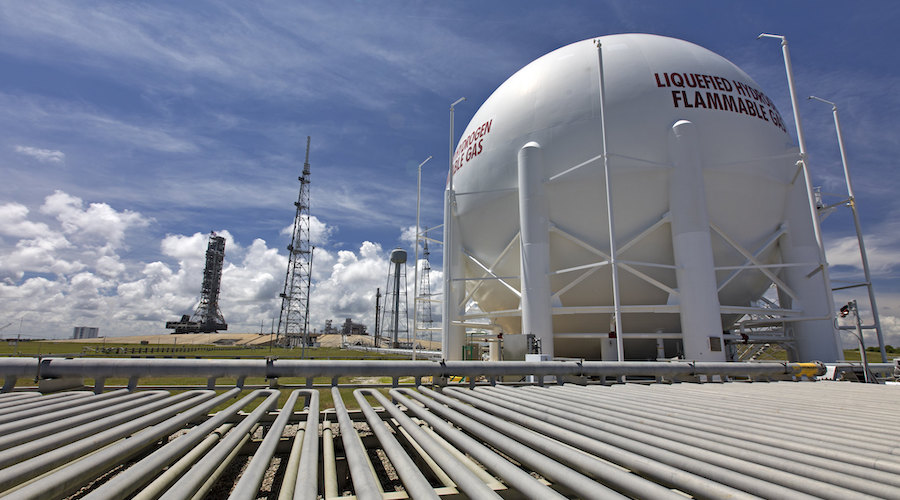Horizon Aircraft Reveals Urban Mobility VTOL Prototype

While electric aviation is mostly experimental today, or when not experimental, only working for unmanned drones (which still do a hell of a lot of good), the aviation industry has much bigger goals. They eventually want aircraft that can take off and land vertically (aka VTOL, or Vertical Take-Off and Landing), run on clean electric power, and carry people and goods around cities at lightning speed (compared to today).
Where Urban Transportation is Going, We Don’t Need Roads
While only so many tunnels can be built to take traffic underground, there’s still a lot of space above cities where many more virtual lanes of traffic can move, kind of like we’ve seen in science fiction. US Federal regulators are already working on how to prevent collisions, often with “lanes” in the sky.
[embedded content]But, unlike Back To The Future II, you probably won’t be able to convert your road car to hover for $39,999.95 and have a flying DeLorean to drive along aerial expressways (which get clogged in the films). The system will largely be automated, and the vehicles will be a lot like drones, with big batteries and fast-moving propellers. So, we’ll get to fly, but not in an old Pontiac.
Horizon Aircraft’s Take On Future Skyway Flyers
Horizon Aircraft Inc. announced that it has completed the construction of its revolutionary 50%-scale “Cavorite X5″ prototype.
The aircraft is able to operate in a very reduced-drag mode, like that of a standard aircraft, for 98% of the mission, thanks to Horizon’s distinctive strategy and technology. Flying as a conventional plane most of the time is also safer and should make certification easier than unusual new eVTOL designs. A hybrid electric propulsion system will power the full-scale aircraft, and it will be able to recharge the battery array in flight while also providing additional system redundancy.
“With a 22-foot wingspan, 15 feet in length, and capable of speeds over 250 km/hr, this 50%-scale prototype is an impressive aircraft.” said Brandon Robinson, CEO of Horizon Aircraft. “Furthermore, it will yield valuable information that will help to reduce technical risk as we move forward with detailed design of our full-scale aircraft.”
The test program for this 50%-scale aircraft will decrease technical risk as Horizon continues development of its full-scale aircraft.
Horizon Aircraft will continue with rigorous testing of its 50%-scale prototype with a strong focus on safety. The Company will soon proceed through transition testing and high-speed flight testing to prove the Cavorite platform is the most advanced and flexible VTOL design in the market.
This aircraft, according to its creators, will be the world’s first eVTOL to fly most of its mission just like a conventional aircraft while providing industry-leading speed, range, and operational value. They prioritize safety, performance, and usefulness for a wide range of use cases by providing distinctive solutions.
This Isn’t Horizon’s First Aerial Rodeo
While anybody can come up with renderings and many companies can build a prototype, aviation isn’t necessarily a great place to start a company if you have no experience in aircraft development. Sure, VTOL is a whole new field, but it’s not like building a drone. Fortunately, Horizon’s team has been at this for a long time.
Brian Robinson was frustrated with the poor fuel efficiency and quality of his 1946 Republic Seabee’s engine, so he decided to explore different alternatives when it came time to have it replaced. Tired of 1930s technology that didn’t work well and was unreliable, Robinson conceived a strategy to develop a new power plant for his plane and convert it into Transport Canada’s flexible Amateur-Built category.
The famous V8 GM Corvette LS-series engine was chosen after a thorough study. This engine offered improved technologies such as air conditioning, a high power-to-weight ratio, and high durability. He added a bespoke gear reduction drive to this platform along with several other safety elements such as twin fuel pumps and dual batteries to fulfill aeronautical demands. The engine power was boosted from 215 horsepower to over 450 horsepower, with improved fuel efficiency, dependability, and safety.
Brian was inspired to build a new Seabee not just by the V8 Seabee conversion he already did, but also by his long-held dream. Simply put, he wanted to design a new all-season amphibious aircraft with improved safety features that would be the modern reflection of an aircraft that many people had come to adore. It didn’t take long for Brian to convince a forward-thinking financier to join him in his endeavor to create a cutting-edge amphibious aircraft. Design work immediately began in earnest. Fortunately, because of the previous design, Brian had a pre-existing experimental aircraft on which he could test many of the innovative technologies that would be employed on the new vehicle.
So began the formal developmental research on an X3 prototype design, which was a fitting start. The X5 Cavorite later evolved toward urban air mobility with eVTOL aircraft becoming technically feasible as the X3 pivoted into the X5 Cavorite.
If you look at the company’s About Us page now, you can see that it also has a team of experienced people who have better odds than many startups of moving from design and prototyping to series production.
Why This Matters
While this startup doesn’t have the industry sway big aviation players already have, it shows that serious people with real-world experience think the urban air mobility space is worthy of their time, attention, and money.
In some ways, urban air mobility seems silly, probably because it’s so unimaginable to us except to compare VTOL craft to children’s toys and small commercial drones. But, the potential societal and economic impacts are big. If you can get people and goods around cities faster, that’s a meaningful difference.
Likewise, if you can do it without adding to already bad traffic congestion or polluting the air even more, that’s an even bigger deal. We’ll see how this company fares, but it’s notable anytime someone with experience in aircraft development throws their hat into the urban air mobility ring.
While nothing is guaranteed this early in the game, it’s definitely good news for the industry as a whole.
Images provided by Horizon Aircraft.
Appreciate CleanTechnica’s originality and cleantech news coverage? Consider becoming a CleanTechnica Member, Supporter, Technician, or Ambassador — or a patron on Patreon.
Don’t want to miss a cleantech story? Sign up for daily news updates from CleanTechnica on email. Or follow us on Google News!
Have a tip for CleanTechnica, want to advertise, or want to suggest a guest for our CleanTech Talk podcast? Contact us here.
Advertisement
This post has been syndicated from a third-party source. View the original article here.




